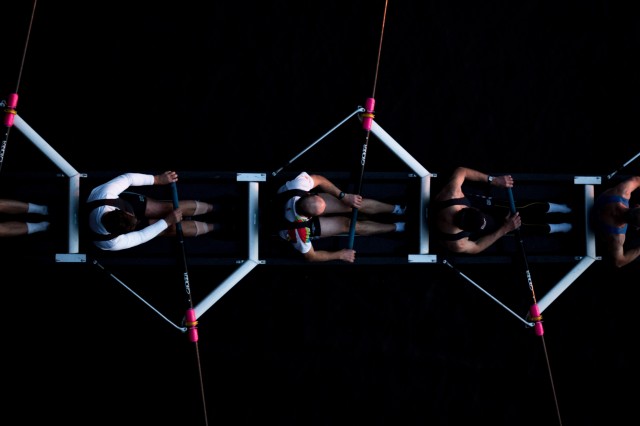
Individuals together. Photo by Josh Calabrese on Unsplash
Andresen, Boud and Choen (2000) set out criteria for experience-based learning.
- The goal of experience-based learning involves something personally significant or meaningful to the students;
- Students should be personally engaged;
- Reflective thought and opportunities for students to write or discuss their experiences should be ongoing throughout the process;
- The whole person is involved, meaning not just their intellect but also their senses, their feelings and their personalities;
- Students should be recognized for prior learning they bring into the process;
- Teachers need to establish a sense of trust, respect, openness, and concern for the well-being of the students.
These criteria can be applied to any description of student-centred active learning and they struck me as a useful lens for considering a co-operative, studio-based pedagogy too. In this post, I’ll pick up on a few of the ideas they suggested to me.
The first two criteria highlight the need to engage each participant, personally. Experience in this context suggests meeting the student halfway, so to speak, allowing for their learning ‘momentum’ or flow. Engagement comes from creating a space in which the next idea is allowed to flow from the previous idea, or whatever is intrinsically motivating for the student. It allows the learner to engage wherever their ‘head is at’. In a painting studio, one work leads to the next. The art student is taught to be tenacious and push ideas in all directions to reveal new truths and new ideas. In my responsibilities for developing employability within the curriculum, an important theme this week has been developing student creativity – not as a skill, but as a mindset. Experiential learning, as defined here through these criteria, alludes to the creative mindset by identifying meaning that is personally significant as a condition of a student’s learning.
The third criterion, on reflective thought processes, is the essential flipside of a creative learning context. Learning has to mean something and, to find and interrogate that meaning, the learner must critically analyse their experience habitually. This is the painter’s mode. The to and fro action of walking to the canvas, standing back, analysing the mark in the broader context of the canvas and the situation (the idea in the context of a body of work for example), evaluating it, and moving forward to make the next mark stands as a metaphor in microcosm for reflective learning. When this process is enacted in a social context, amongst peers or others in a studio, the vibrancy of the reflective learning activity is enhanced exponentially. If ‘to and fro’ is a metaphor for experiential learning, what might that learning look like for the non-painters?
It was the next point that caught my attention initially. It says, “The whole person is involved, meaning not just their intellect but also their senses, their feelings and their personalities.” First, the ‘whole person’ is an important phrase for me. It is so important that it is the central mantra to the work I am leading on employability in the curriculum. While employability schemes get caught up in dissecting what we are after by identifying skills, attributes, capitals, and so forth, at the end of the day we are all interested in developing qualities that are individual, life-affirming, and unmeasurable. Yes, we can and must look at the particular dimensions that make up a graduate, and students need to do this too if they are to explore, consider and articulate their strengths, but we must bring it all back to ‘the whole person’. A student must have a sense of themselves, of their own growth and a tangible sense of who they are becoming. More than this, the criterion draws our attention to develop a student’s the use of their senses (being aware and receptive), their feelings and gut intuition, and to the personality that is developing through the experiences that they have while at university. Education creates a fragile space which all students have to learn to navigate safely. Not only navigate, but negotiate. This makes a higher education learning space a living lab in which the learner is their own subject. Supporting the development of the learner’s metacognitive and reflexive skills is, arguably, the most important outcome of a university education, yet one that is too often ignored. A co-operative, studio-based education is the natural home for fostering a learner’s ability to navigate and negotiate their own development.
The penultimate point, on prior learning, feels different. Initially, it suggested to me that conducting a formal skills or knowledge audit would be a good idea. Perhaps. But more important than that, for me, is the need to recognise the values of difference and diversity, and of personal learning ecologies. In an art studio, this becomes apparent immediately. Just as it is easy to recognise the work of any famous artist by the way they put their work together (we know a Picasso or a Gaugin when we see one), it is also true for the student artist. In the same way that we recognise different handwriting, in a studio, we have more clues that tell the viewer that each and every student is exceptional, even as they are learning and experimenting with the marks, subjects, colours, and the many other variables and parameters that define their work.
The final criterion brings us to the qualities we should expect from an experiential and co-operative learning environment. Such an environment should exude trust, respect, openness, and concern for each other’s well-being. It is a space of mutuality in which peer and tutor presence signify the co-operative values of association.
The studio stands out, not only as a learning space for artists, but as an experiential environment that can challenge, support and inspire any learner.
References
Andresen, L., Boud, D., & Cohen, R. (2000). Experience-based learning. In G. Foley “Understanding adult education and training, 2nd edition.” Sydney: Allen & Unwin.
